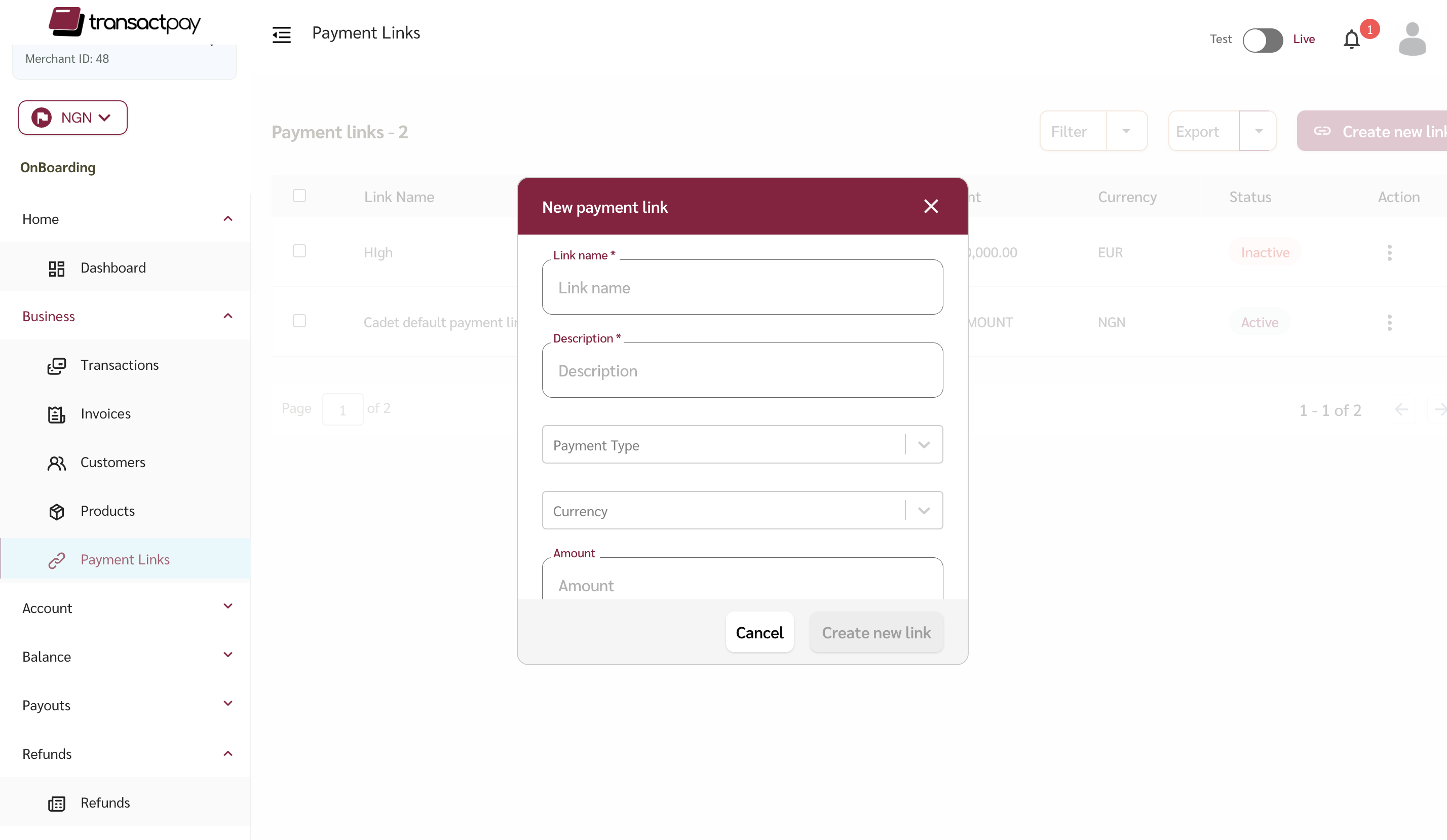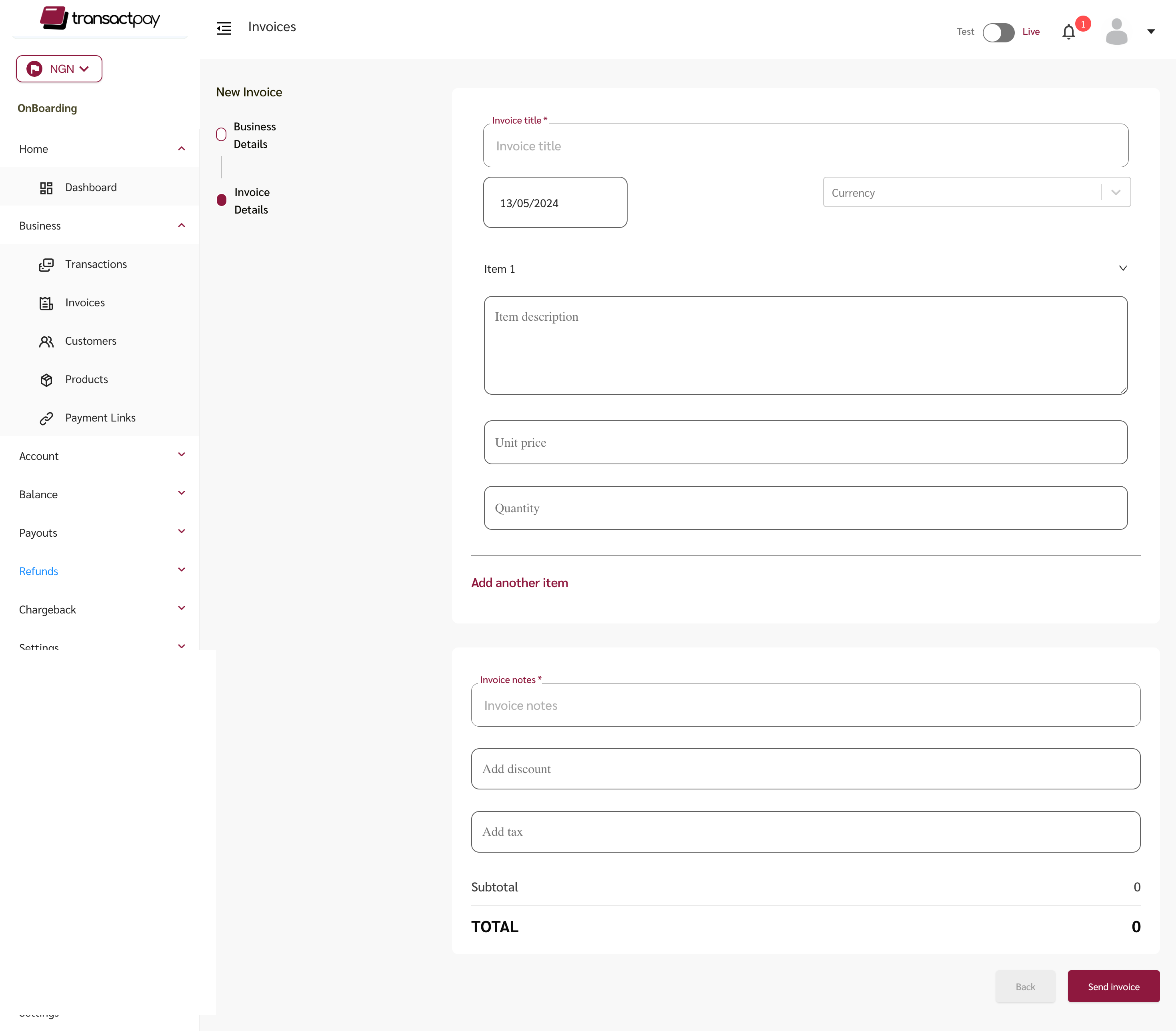Payment Links
Payment Links let you collect payments instantly—no code, no website. Just generate a link from your Transactpay Dashboard, share it, and get paid via card, bank transfer, or OPay.
Payment Links are a simple way to collect payments without writing any code. You create the link from your Transactpay Dashboard, share it with your customers, and they pay using our secure checkout.
Perfect for merchants selling on social media, freelancers sending invoices, or anyone who needs a quick, reliable way to collect payments online.
Key Benefits
- No website or code needed
- Accept card, bank transfer, and OPay
- Shareable on WhatsApp, Instagram, Email, etc.
- Works across desktop and mobile
- Real-time notifications when payment is successful
How It Works
- Login to your Transactpay Dashboard
- Go to Collections > Payment Links
- Click Create New Payment Link
- Enter the link title, amount (optional), and description
- Click Generate Link
- Share the link with your customer

Once your customer clicks the link, they’ll be taken to a hosted checkout page where they can complete the payment using any available channel.
Supported Payment Methods
- Card
- Bank Transfer
- OPay Wallet
These methods are automatically enabled on the payment link checkout.
Payment Flow
- Customer clicks the payment link
- Checkout opens with pre-filled amount and description
- Customer chooses a payment method
- You are notified instantly on the dashboard when the payment succeeds
If you're a developer, you can still configure your webhooks in the dashboard to receive real-time event notifications like payment.success.
Security
- All transactions happen over HTTPS on Transactpay’s secure infrastructure
- You do not need to worry about PCI compliance — we handle all card data securely
Tips
Reusable: You can create payment links for one-time or recurring purposes
Use for product sales: Include product info in the title/description
Use on social: Add links to your Instagram bio, WhatsApp Chats, or Linktree
WarningIf the link is deleted or disabled in the dashboard, it becomes inactive.

Updated 6 months ago
